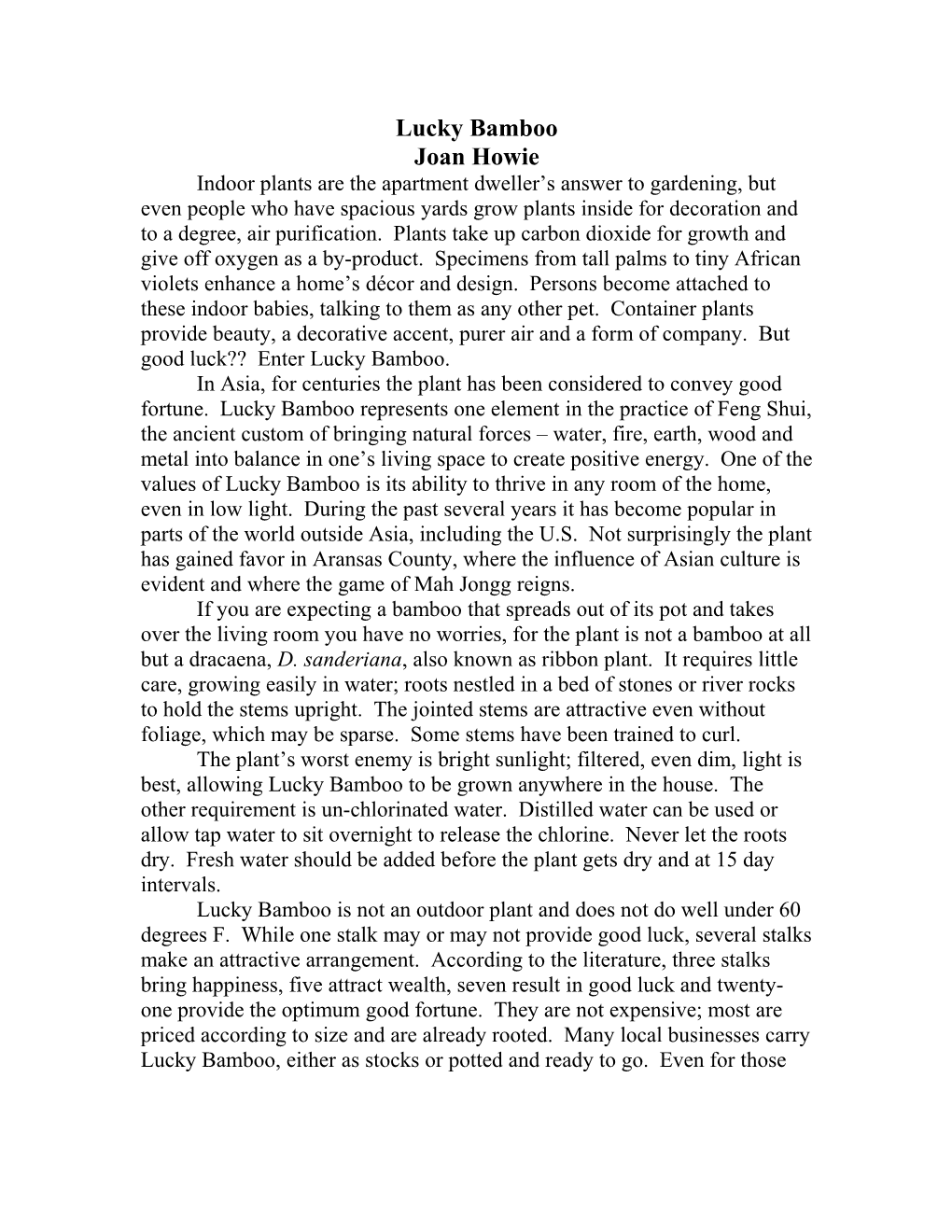Lucky Bamboo
Joan Howie
Indoor plants are the apartment dweller’s answer to gardening, but even people who have spacious yards grow plants inside for decoration and to a degree, air purification. Plants take up carbon dioxide for growth and give off oxygen as a by-product. Specimens from tall palms to tiny African violets enhance a home’s décor and design. Persons become attached to these indoor babies, talking to them as any other pet. Container plants provide beauty, a decorative accent, purer air and a form of company. But good luck?? Enter Lucky Bamboo.
In Asia, for centuries the plant has been considered to convey good fortune. Lucky Bamboo represents one element in the practice of Feng Shui, the ancient custom of bringing natural forces – water, fire, earth, wood and metal into balance in one’s living space to create positive energy. One of the values of Lucky Bamboo is its ability to thrive in any room of the home, even in low light. During the past several years it has become popular in parts of the world outside Asia, including the U.S. Not surprisingly the plant has gained favor in Aransas County, where the influence of Asian culture is evident and where the game of Mah Jongg reigns.
If you are expecting a bamboo that spreads out of its pot and takes over the living room you have no worries, for the plant is not a bamboo at all but a dracaena, D. sanderiana, also known as ribbon plant. It requires little care, growing easily in water; roots nestled in a bed of stones or river rocks to hold the stems upright. The jointed stems are attractive even without foliage, which may be sparse. Some stems have been trained to curl.
The plant’s worst enemy is bright sunlight; filtered, even dim, light is best, allowing Lucky Bamboo to be grown anywhere in the house. The other requirement is un-chlorinated water. Distilled water can be used or allow tap water to sit overnight to release the chlorine. Never let the roots dry. Fresh water should be added before the plant gets dry and at 15 day intervals.
Lucky Bamboo is not an outdoor plant and does not do well under 60 degrees F. While one stalk may or may not provide good luck, several stalks make an attractive arrangement. According to the literature, three stalks bring happiness, five attract wealth, seven result in good luck and twenty-one provide the optimum good fortune. They are not expensive; most are priced according to size and are already rooted. Many local businesses carry Lucky Bamboo, either as stocks or potted and ready to go. Even for those with no interest in the plant’s attribute for luck, Lucky Bamboo makes an attractive and easy care indoor plant.
